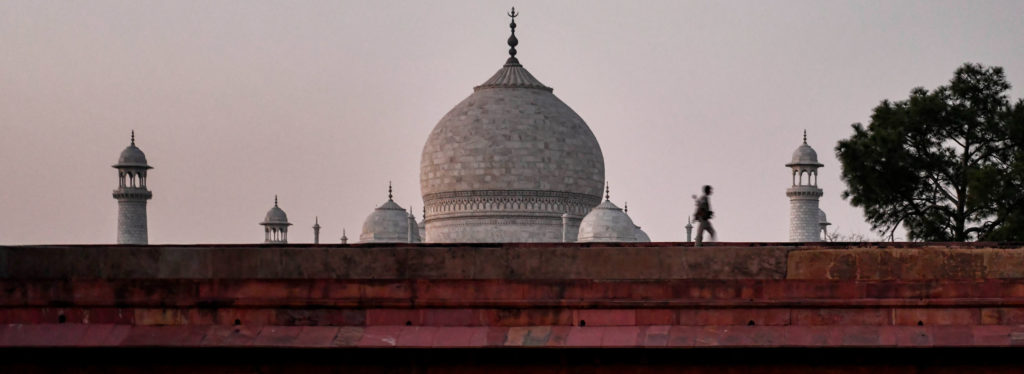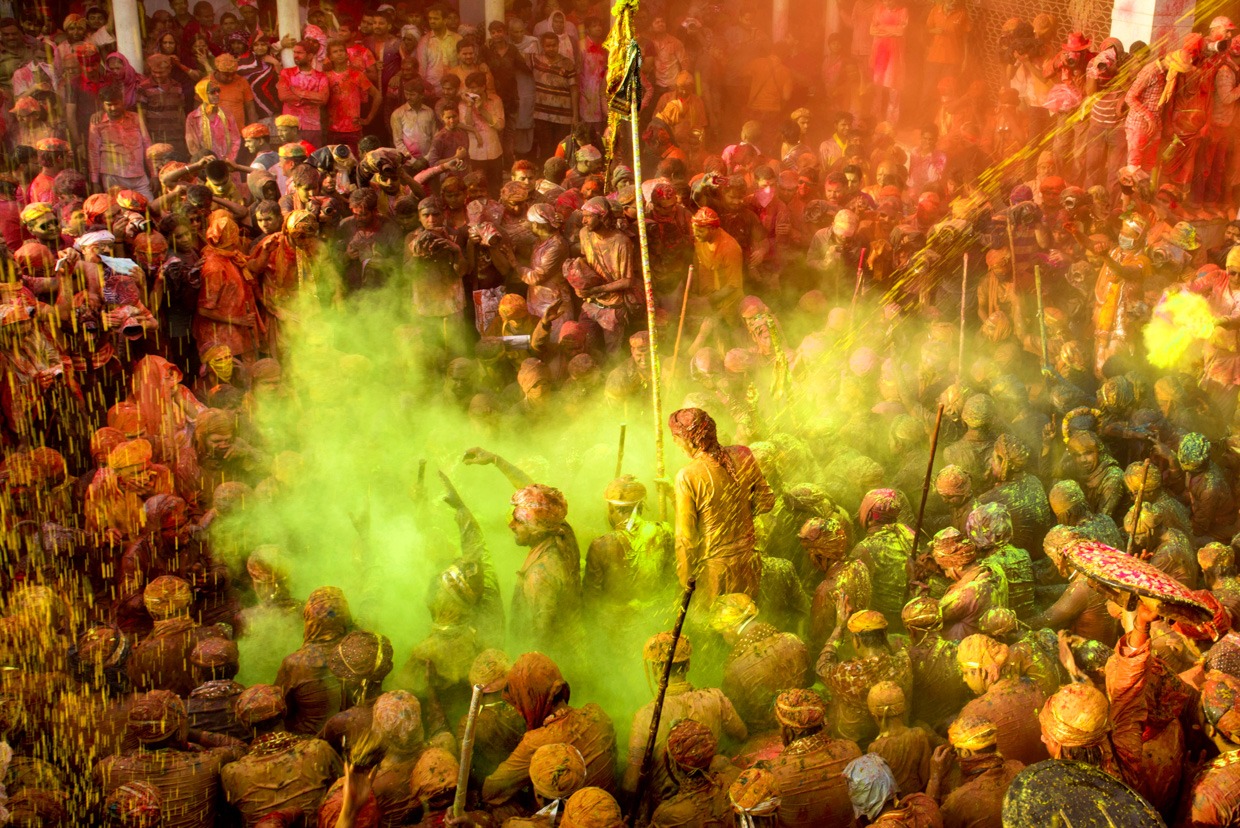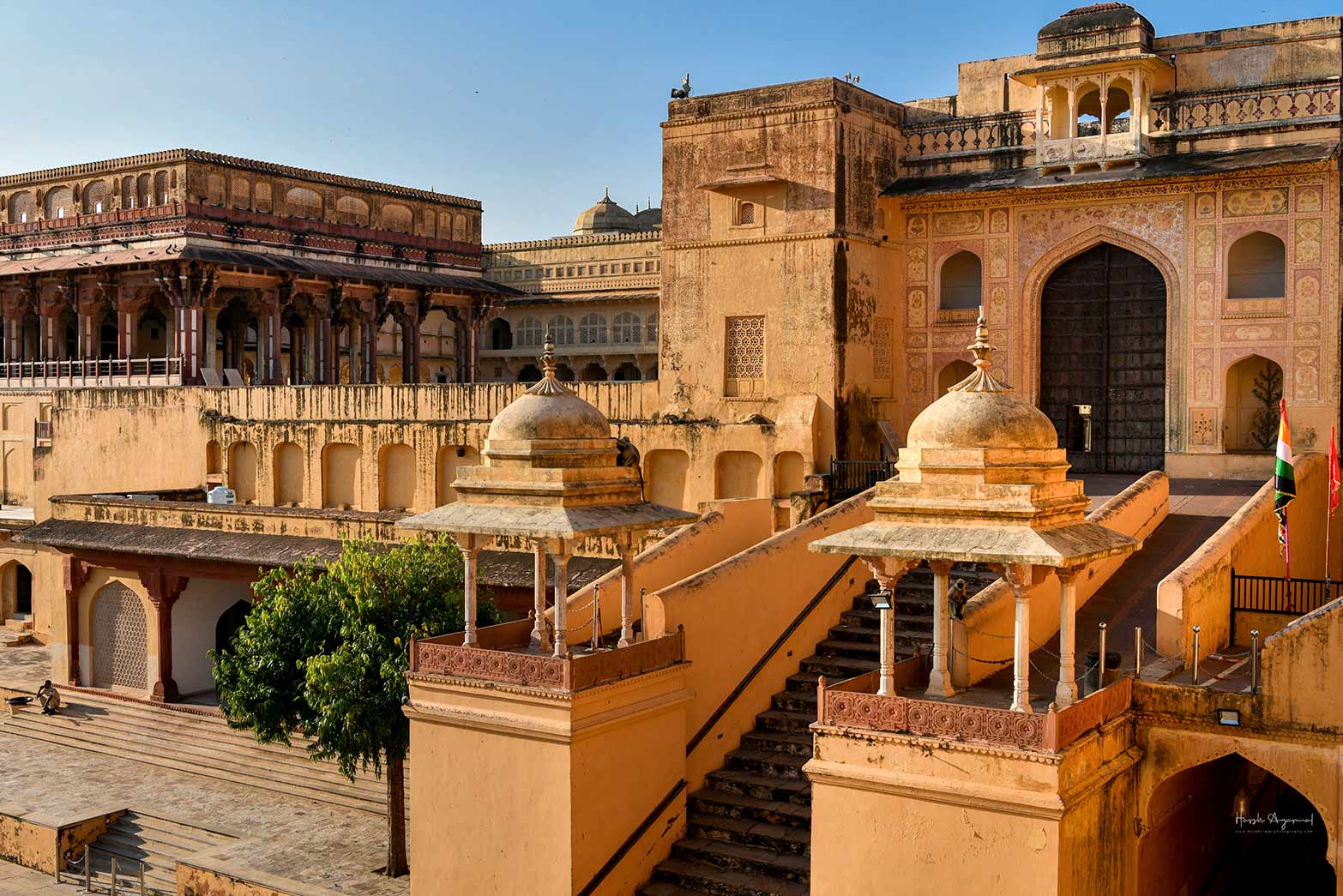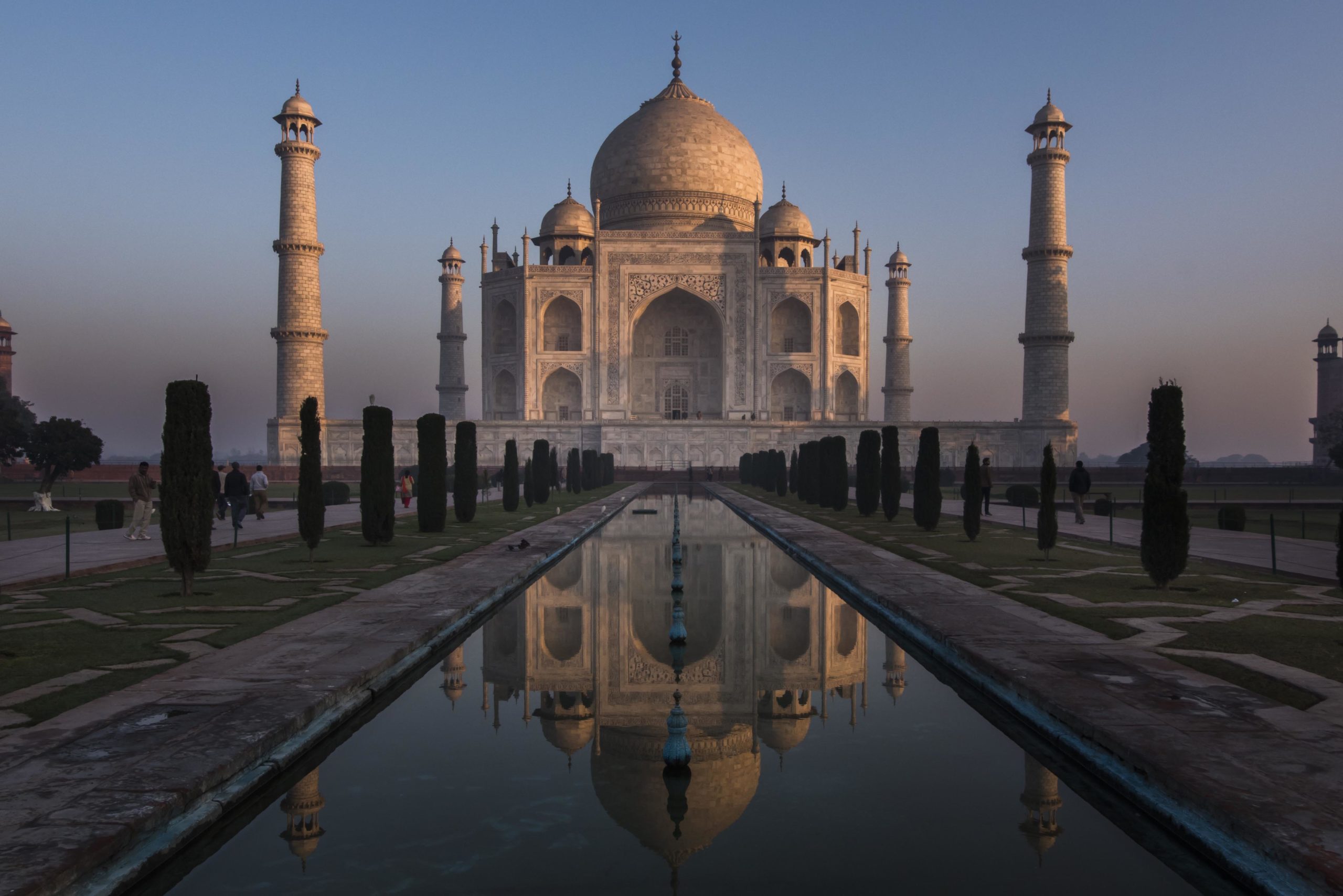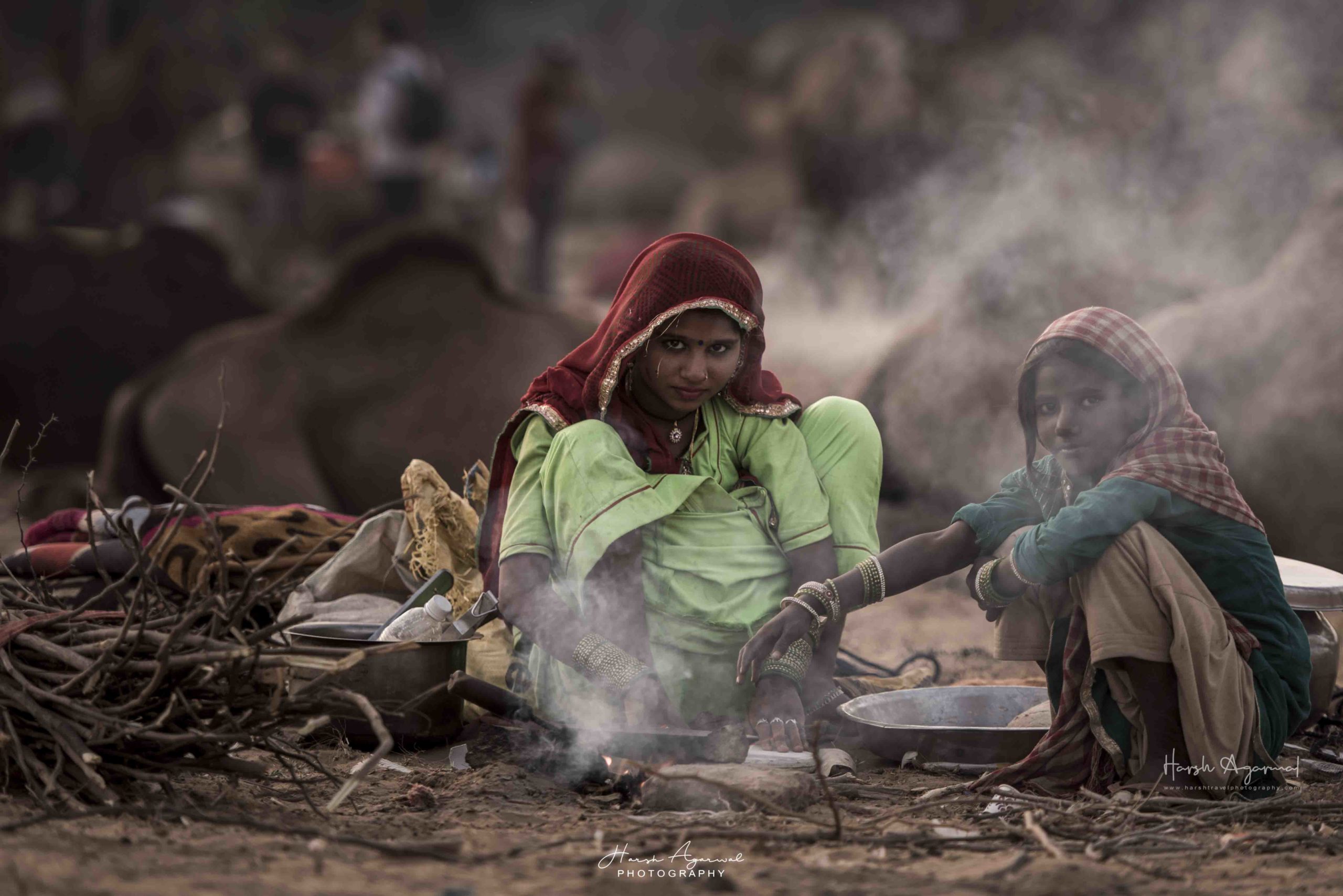Treasured as an ‘Epitome of Eternal Love’, the Taj Mahal is known to enchant many till times immemorable. Radiating flawless beauty, the white marble mausoleum is one of the most visited tourist places in India. But the Coronavirus pandemic seems to have unfolded a different aspect, perhaps an untold one, about the iconic wonder. As a matter of fact, the virus has affected the entire world and the Taj Mahal is no exception.
For the first time in history, the monument remained shut for such a long time. Obviously, this had a huge impact not only on this heritage site but also on other big and small things associated with it. From ‘chai wallas’, photographers, tourist guides to the tourism industry everybody has been bearing the effects of COVID – 19. Looking at another side of the coin reveals that the much-hyped ‘Chinese virus’ has brought a sigh of relief for the mausoleum by offering it some ‘Me Time.
From an unprecedented crisis to lockdown, here’s a brief about what all happened and how the white wonder is coming to terms with it.
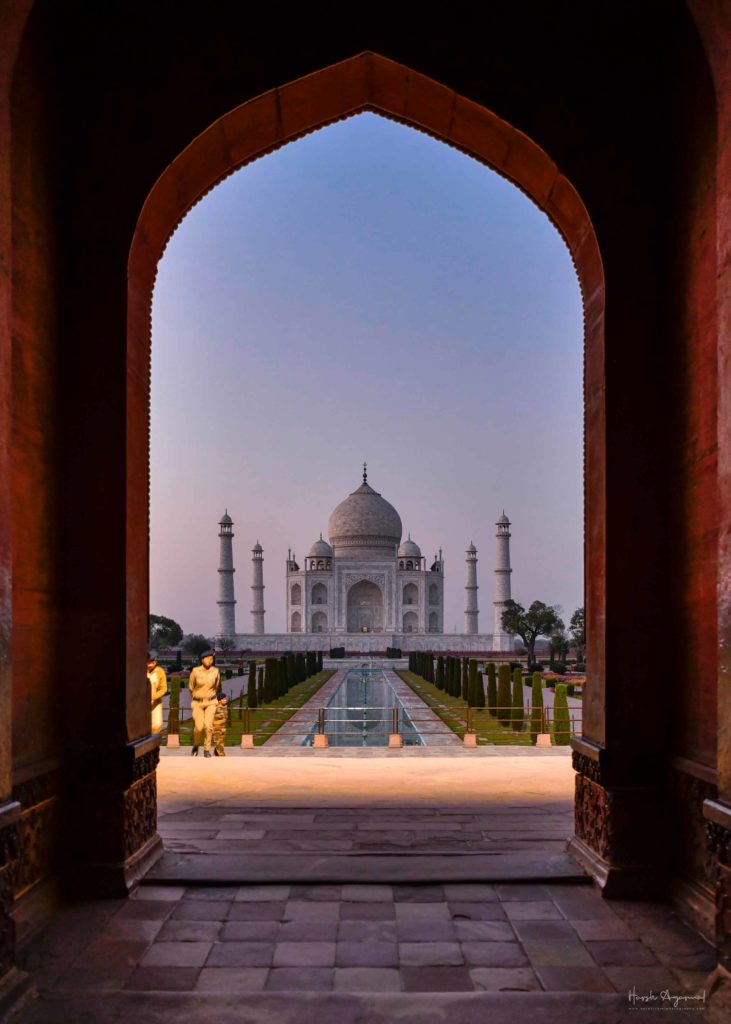
History of the Taj Mahal
Reckoned as the masterpiece of Mughal architecture, the radiant monument oozes history in every bit. More than history, the monument is popular for a romantic story that eventually led to its construction. The interesting tale about the love of a husband cum emperor Shah Jahan for his beloved wife Mumtaz Mahal intrigues many.
Standing as a testimony of intense love, the Taj Mahal was built in 1632. The centerpiece took about 11 long years to take shape. However, it took another decade to continue work on other phases of the project. In 1653, the entire structure was completed and we got an architectural wonder piece. The grief-stricken emperor crafted the white wonder to house the tomb of Mumtaz Mahal. Surprisingly, both Shah Jahan and his wife rest in peace till today in sarcophagi at lower levels in the main edifice.
Positioned on the banks of River Yamuna, the magnificent tomb depicts the opulence of the bygone era. Ustad Ahmad Lahauri led a board of architects who further guided around 20,000 artisans employed to build the monument. Once studded with semi-precious stones, the Taj was titled as a UNESCO World Heritage Site in the year 1983. In 2007, The monument further made India proud by ranking amongst the 7 New Wonders of the World (2000 – 2007) initiatives.
When, why, and for how long did the Taj remain closed before COVID – 19?
It is not hidden from anybody that the present lockdown due to the outbreak of the Corona Virus has taken many iconic monuments to storm. Due to the present scenario, the historic places including the Taj have been shut to the public. Not to mention, this has affected the tourism industry badly.
Surprisingly, it is not the first time that visitors are prohibited to soak in the beauty of their favorite monument. Flipping the pages of history tells that the Taj Mahal was closed three times earlier as well. Read on to know about it!
- The Taj Mahal confronted isolation for the first time in 1971 in the month of December during the Indo-Pak War. At that time, the white mausoleum quickly turned green as it was camouflage with a scaffold to look like a bamboo stockpile. The monument remained closed for the next 15 days.
- Next, in 1978 also the mausoleum met the same fate but this time only for a week. It was the time of flood which led to the closure of the Taj Mahal.
- Besides these, the sprawling wonder remained closed for a day in 1984 post the assassination of Indira Gandhi, the Prime Minister of India at that time.
Apart from these, people are not allowed to visit the Taj Mahal during high-profile visits like that of American President Mr. Donal Trump. But it is nearly after 49 years post the devastating flood of 1978 that the monument has remained closed for such a long time.
What led to the outbreak of COVID – 19 around the Taj Mahal?
While the first case of Corona Virus was reported in China in December 2019, India was still on the safer side till January end. Here’s a brief timeline about the outbreak of the virus in the incredible country.
- The count of the COVID positive patient initiated from Kerala.
- But it was on March 3 that the country reported its sixth COVID-19 case in Jaipur.
- Detected in the ‘Pink City’, the patient, a citizen of Italy was on a trip to India.
- The next day was a nightmare for India as the country saw a whopping count of 22 patients in a day. It included the wife of the person who was tested positive a day before and 14 other members of the Italian group they were part of.
- The driver who was hired by the group was also diagnosed with Corona Virus.
- It was on this day only that the outbreak of COVID-19 was also reported in Agra. Six people in Agra who were relatives of the Delhi patient detected on March 2 were also reported positive.
In this way, the virus reached the ‘City of the Taj’.
The moratorium on the tourists to marvel at the incredible monument
In order to save Agra from becoming India’s Wuhan, the Mayor of Agra wrote a letter to UP’s Chief Minister. In his letter, Naveen Jain requested to temporarily shut the cultural and archaeological sites including the Taj Mahal.
These iconic sites attract a large number of visitors including foreigners every day. Having said that, the step was proposed just to initially reduce the possibility of an outbreak of the epidemic. The suggestion didn’t go well with the tourism ministry. The reason being, as per the ministry enough precautions like thermal screening were already being taken for the safety of the tourists.
India announces suspension of all tourist visas for nearly a month
Although known for offering world-class hospitality and preaching the practice of ‘Atithi Devo Bhava’ meaning ‘Guest is God’, India imposed a ban on tourists. All tourist visas were suspended from March 13 to April 15 due to a whopping increase in the number of COVID cases. However, there were some exceptions made only for holders of official, diplomatic, UN, or international organizations, projects, and employment visas.
The sweeping travel ban was one of the harshest to be imposed by any nation thus far. This sent a shocking wave among the tourists stranded in India and also to the tourism industry. Not to forget the aviation and hotel industry along with the crawling economy. Apart from the visa suspension, the new order also announced a new difficult quarantine regime for a minimum of 14 days for the incoming passengers.
What followed next?
- The annual Shah Jahan Urs, as scheduled from March 21, cancelled – It was for the first time in the history of the Taj Mahal that the 3-days annual Urs was not celebrated. It is the time when the entry remains free and several functions are organised. Additionally, the original sarcophagi remain open for the public during these 3 days only. But, as the Taj Mahal was closed in the wake of the novel Coronavirus, hence there were no celebrations.
- A few tourists visited Agra but couldn’t visit the Taj Mahal as it was closed.
- Earlier it was closed till 31st March 2020 but then the date was extended.
- Agra tourism came to halt.
Adverse effects of the lockdown
As soon as the lockdown was announced, a pall of gloom descended on the tourism sector. Nearly 4 lakhs people associated with the tourism sector in Agra were worried about earning their daily bread and butter. Not only big industries but small-scale units bear the worst impact of the pandemic.
From five-star hotels to budget-friendly lodges were waiting for the customers. Nearly 550 hotels, more than 150 guest houses, and 150 restaurants have been shut for the past 5 months. From taxi drivers to once crowded parking areas eagerly waited for things to get normal again. No wonder photographers, guides, hoteliers were left with no work. 1750 guides and travel and tour operators were unemployed.
Almost 500 shops and handicrafts emporiums and showrooms have been shut for so long. They used to survive on tourists who used to visit these shops to buy different souvenirs especially replicas of small marble Taj Mahal. 3000 hawkers and 6000 shopkeepers were dependent on monuments. Auto rickshaw, E-rickshaw, Tanga, and Taxi drivers are seeking passengers. A rickshaw ride used to be a joyride, especially for foreigners. They love the way they were ferried from one place to another on these Tuk-tuks. But nowadays these hardworking rickshaw pullers find it difficult to survive during this crisis. Statics show that 40,000 handicraft workers have nothing to do. Their talent to transform an ordinary thing into a masterpiece has no admirers now. Even if the Taj Mahal gets open to the public, it is expected that things will get normal by October 2021.
Have a look at some of the, directly and indirectly, affected industries:
| Directly affected | Indirectly affected |
| – Guides – Tour Operators – Transporters – Restaurants – Hotels – Handicraft – Industry – Photographers | – Tea stalls – Stray animals relying on restaurants – Small souvenir shops – Rickshaw pullers – Hawkers – Local transport – Petha industry |
These are just a few. The effects of COVID – 19 are beyond description. It will definitely take time for things to get used to the new normal.
But, as of now, the good news is that the lockdown situation gave the desired ‘Me’ time to the monument. During these days, the mausoleum went under some restoration that added to its beauty. Another good news is that the wait is over now! After so long, the Taj Mahal is reopening from 21st September 2020. So, pack your bags, follow the safety measures and get ready to visit the iconic monument soon. You can check out our article on how to capture the picture-perfect Taj Mahal.


